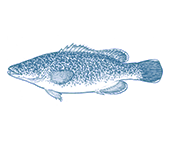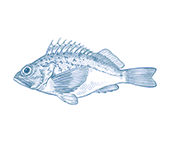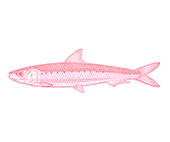




- Say No
Wild Caught
Region:
China
Note: This assessment has not been done under the GoodFish Wild Caught Seafood Standard. It has been adapted from the Monterey Bay Aquarium’s Seafood Watch 2020 assessment for Japanese flying squid.
- Japanese flying squid are fast-growing and short-lived, found throughout the Northern and Western Pacific Ocean.
- This assessment describes a major Chinese-managed fishery in the Northwest Pacific Ocean. Weak seafood labelling requirements make it difficult to tell if squid were caught in this Chinese fishery, or caught by other nations but processed in China before being exported to Australia.
- There are concerns that at least one Japanese flying squid population fished by China is subject to overfishing.
- The midwater trawl fishing methods used likely pose a significant risk to endangered species, including smooth hammerhead sharks.
- While the fishery is unlikely to severely impact seafloor habitats, squids are important in their ecosystem as a key predator and prey species. This is not accounted for in fishery management, and the fishery is likely to pose a significant ecosystem threat.
China: 320,000t caught in 2017, approx. 15,200t (all squid species) imported to Australia in 2021.
This assessment has been adapted from the Monterey Bay Aquarium’s Seafood Watch 2020 assessment for Japanese flying squid 2020.
Japanese flying squid are fast-growing and short-lived, found throughout the Northern and Western Pacific Ocean. They are a highly migratory species, and while population structure is poorly understood, fishing is centred on three annual spawning seasons, in winter, summer and autumn, which are assumed to represent three different populations.
Japanese flying squid are mostly caught by the Chinese fishing fleet using midwater trawl fishing methods in the Northwest Pacific Ocean. This assessment covers the Chinese portion of the catch caught in China’s exclusive economic zone, though a significant portion of Chinese-caught Japanese flying squid may also be caught in the high seas or in other nation’s waters. A relatively minor proportion (not assessed here) is caught using purse seine and jig fishing methods.
The source fisheries of most chilled and frozen squid imported into Australia are unclear. Most squid purportedly originates from China, but problems with product labelling in Australia mean it is unclear whether the squid is caught by Chinese vessels or by other nations and then sent to China for processing before being exported to Australia. Current regulations do not require the country of catch to be specified on the label, leading to potential confusion. Squid caught in Peru, Chile, and Argentina, for example, could be exported to China for processing and then re-exported to other countries.
The health of Japanese flying squid populations is unknown, though it is considered likely that they are subject to overfishing on at least one major breeding population in the East China Sea.
The midwater trawl methods used to catch Japanese flying squid catch a range of bycatch species. This bycatch is subject to minimal management or scrutiny, though is considered to pose a high risk to endangered species including smooth hammerhead sharks.
Midwater trawl fishing methods operate in the water column and are not considered to pose a serious risk to seafloor habitats. However, reports of bottom-dwelling species caught as bycatch suggest there is some impact on the seafloor. Squids have an important ecosystem role as prey and predator species, which is not considered or accounted for in fishery management.
There are some general management measures in place in these fisheries, but it is not possible to assess their effectiveness in ensuring fishing impacts are sustainable.
IUU Fishing in Chinese distant-water squid fleets
Chinese distant-water fleets targeting squid have been reported to engage in illegal, unreported and unregulated (IUU) fishing. This includes fishing without authorisation in another country’s territorial waters and turning off vessel transponders (“going dark”) to avoid detection. These practices and others occur in Chinese squid vessels operating in the Southeast Pacific, Southwest Atlantic and Northwest Indian Ocean.
Human rights abuses, including violence, exploitation, debt bondage, slavery and murder, have been documented to occur aboard Chinese squid vessels. Refrigerated cargo vessels, or reefers, enable squid vessels to offload their catch and be resupplied at sea, avoiding port authorities. As a result, workers can be trapped aboard in horrific conditions for years at a time.


